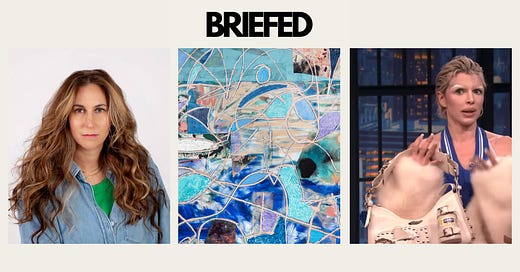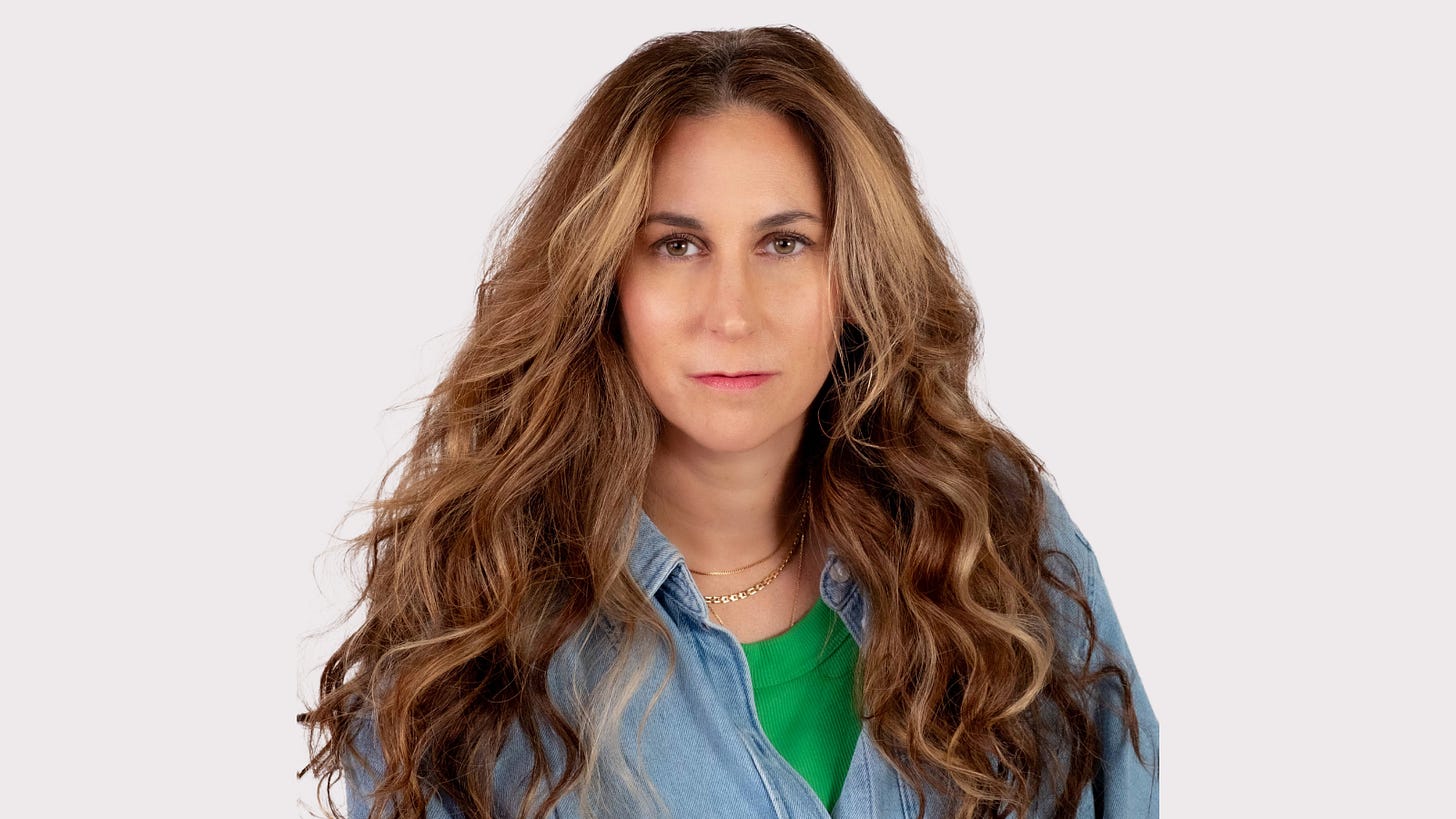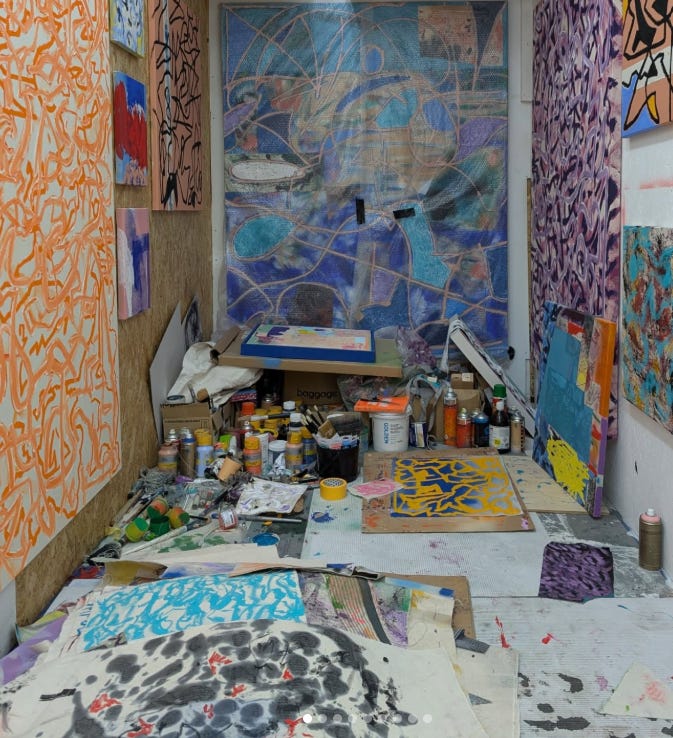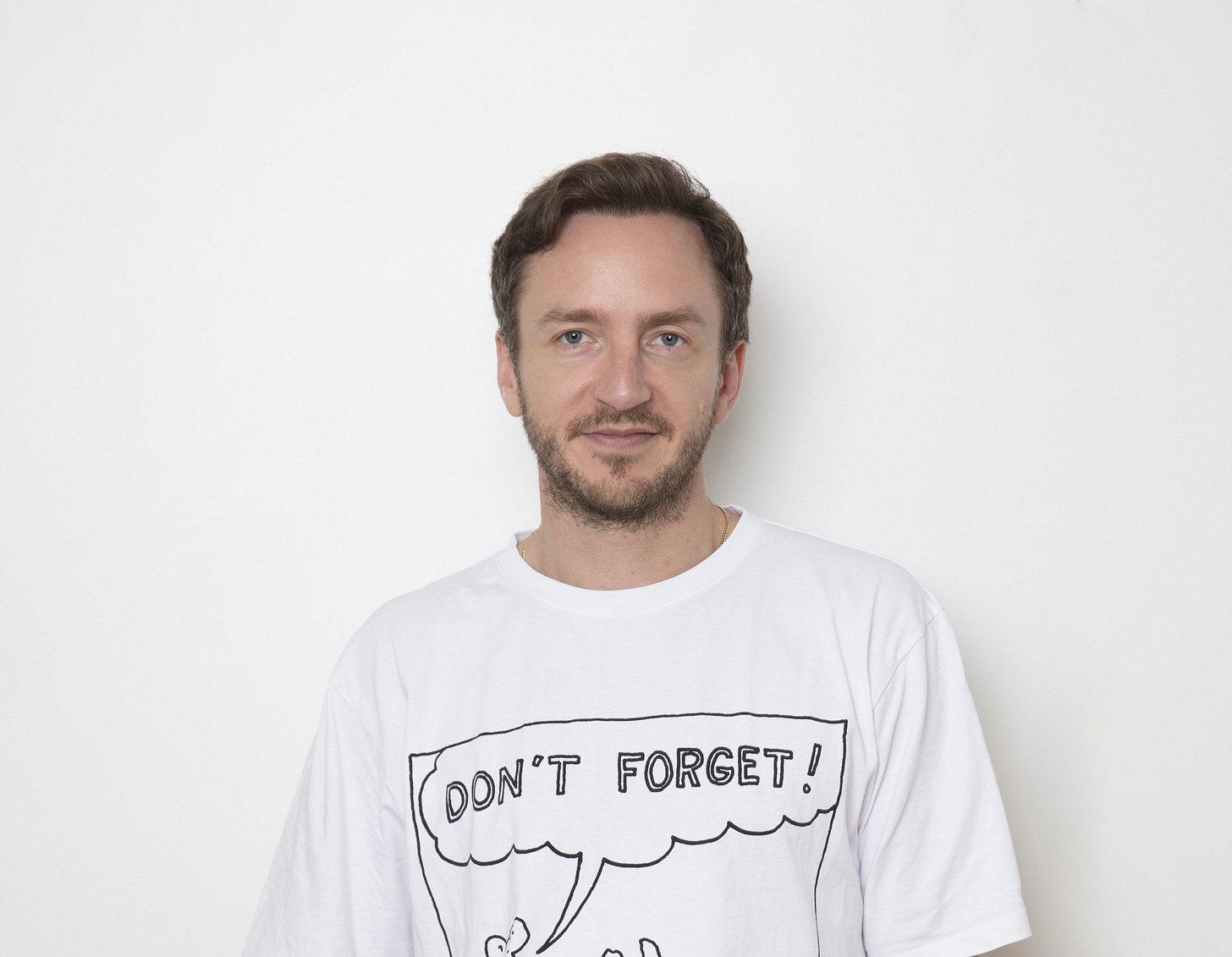Briefed: Shayne Millington on her 20-year career, Julia Fox's mayo bag, Göteborg Film Festival on artistic freedom
+ Glasgow's emerging talent David Iain Brown talks about his art
When I started this newsletter last year, I had no idea what it could grow into. But now, with over 600 of you subscribed, it feels like there are so many exciting places it could go.
You might have noticed some changes - a new name and logo design. Alongside the usual advertising and marketing news, I’ll be introducing more interviews and in-depth analysis on topics close to my heart, spanning the arts and culture world, both near and far.
Briefed will be your go-to weekly digest, keeping you informed on everything happening in this exciting space.
In this edition, we have interviews with McCann New York’s chief creative officer Shayne Millington, up and coming Glaswegian artist David Iain Brown and a short from Göteborg Film Festival that asks cinema goers to be ‘disobedient’ and support artistic freedom.
Creativity
Over her 20-year advertising career, Shayne Millington has always prioritized work that makes a difference for brands. Driving societal changes with creativity is super important for Millington and something she was keen to get across.
As chief creative officer at McCann New York, this is evident in her team’s latest campaign with The Last Prisoner Project that resulted in President Biden commuting the sentences of over 2,500 individuals incarcerated for nonviolent drug offenses, including those serving disproportionate sentences for cannabis.
During our conversation, Millington also spoke candidly about always staying true to her art director roots, the gender bias she’s had to overcome within the industry (including being put on beauty accounts because she wore make-up WTF) and why, as a young person, she felt the need to hide her lack of fine art skills and her love of user manuals. Hard relate.
“I started to get judged by the way I looked. I wore makeup, I did my hair, I loved the femininity that I could bring. And that was starting to pigeonhole me. People decided what I should work on, rather than what I wanted to work on and what I thought I could really bring to it… so I worked a lot in beauty.”
What struck me during our conversation were similarities that Millington and I shared, which we bonded over. Her late father was originally from Paisley, where I currently live, and she’s also the eldest of three daughters, like myself.
“Fun fact: my mother named all of us [her and her two sisters] male names so that for resumes, we wouldn’t be judged first,” she says. “One interview I was brought to, and they didn’t know [I was a woman], it was before the internet, basically, and when they found out, they said that it was a problem.”
It’s one of my favorite profiles that I’ve done. Hope you enjoy it too! Read it here.
Arts



I had the opportunity to visit the studio of emerging Glaswegian artist David Iain Brown to experience his wonderfully vibrant paintings up close. Nestled in an old schoolhouse in Glasgow’s East End, Brown’s work draws on his printmaking roots and finds inspiration in the seemingly ‘mundane’ aspects of daily life. The result is a strikingly abstract style reminiscent of stained glass, blending collage-like elements into colorful, dynamic compositions.
When I meet Brown he gives me a tour of the building, which is full to the brim with artists, each in their little cubby holes. Some of the studios invite curiosity with their open doors, while others remain hidden behind velvet curtains, adding an air of mystery. Amidst the chaos of paint-splattered walls and floors, there’s a surprising sense of calm and camaraderie - a timeless, almost vintage quality to this shared world of artistic creation.
Q. Did you always want to be a painter?
I’m from a little fishing village in South Ayrshire, being an artist down that way wasn’t a thing. The only person I saw who was creative was this guy painting signs for the boats. So in high school, that was my kind of strength. But even the art teachers weren't pushing it, they said, ‘No, you'll never be an artist’. And I was like, ‘Oh, I'll prove you wrong’.
Q. Where do you draw influence from?
When I went to art school [Gray's School of Art in Aberdeen], I realized that everyone was quite fixated on technology and looking down, whereas when I was coming back from Aberdeen to go to Girvan, my hometown, I was just looking. I was on the bus, looking at all the color combinations of the fields and forests. I think it's just that just looking and extracting from my surroundings.
Q. How big a role does color play in your work?
Some colors are very contrasting, but I like to make clashing colors and try and have this kind of cohesive balance. A lot of the work is kind of chaotic, but there's also balance within that.
I’ll just destroy work. If something's sat in the studio for a while, I'll unstretch it, chop it up, and then put it back into the new work. So there's always repurposing. You deconstruct to then reconstruct it. It's still progressing, the practice developes all the time.
Q. Does the city of Glasgow influence your work?
The rawness of the canvas is like Glasgow, it’s a raw city.
Q. How do you start a painting?
I either start with a blank page or I look through all the collages, old paintings, and rags. It’s like a jigsaw that I’m trying to solve and I don’t know what the outcome will be. I'll use a bit of collage, glue that down first, and then that starts to change what the painting becomes.
It's always changing, for me it’s like a diary entry each day, coming in, adding a little bit of something different to it. People might be able to read it as a longer process because some of the bits of collage have been sitting around for four or five years before they're getting used. I do like that aspect of it. Because I don't really like wasting. There’s maybe one or two paintings in the six years that I've actually just ripped up and then never used the parts, just put them in the bin.
Q. Who are your creative influences?
There’s an artist called Sterling Ruby, he is LA-based now, but he's got a massive warehouse, and he jumps between loads of different things, like fashion sculpture, and massive paintings.
I used to watch documentaries about him on YouTube back in the day, and just the way he made marks, he used to bring the canvas out onto the road and just roller it, and then he'd imprint all the road markings and use that as a starting point. So that was where I picked up the passion for the canvas that's already got pre-made marks from previous paintings.
There's another artist called Tal R. He's amazing at color and composition. Obviously there's not much composition in the abstraction in my work, but it's still storytelling, you can follow a mark and a line, and people do tend to see different things in my work than I do and as soon as they pont it out, I’ll see it. Which I like.
Advertising
Behind every film that challenges authority, questions societal norms, or uncovers hidden truths, there is a filmmaker who has chosen to take risks. Through its annual campaign, Göteborg Film Festival invites film enthusiasts to support the creators behind the lens and champion artistic freedom of expression by contributing to its film fund.
In countries where this is restricted, some filmmakers are often forced to work in secret, smuggling their creations across borders at great personal risk. This initiative is dedicated to strengthening the film industry in countries facing economic or political challenges, with a mission to foster a diverse cultural and media landscape.
In the short, viewers come face to face with a dictator who encourages the audience to be mindful of ‘dangerous, traitor’ filmmakers. Of course, the premise of his message is to encourage people to be ‘disobedient’ toward him and support filmmakers.
Texas Pete has been around since 1929 and, with the hot sauce market growing, it is looking to remind Americans of its place on shelves.
‘The Ballad of Texas Pete’ highlights the brand’s deep roots in Southern culture and its overlooked yet iconic cowboy mascot with a boot-stompin’ ballad that is catchy and quick.
First released in 1998, Furby’s were the must-have toys for a period and still hold a lot of nostalgic charm to this day. So much so, that the Hasbro-owned toy is teaming up with shoe brand Hey Dude for a bespoke collaboration.
Marking the moment, a larger-than-life furby (furbzilla, if you will) has been unveiled in a promo video. The cheeky robot has taken to the streets of London as chaos ensues in the city.
Culture
Julia Fox has declared that mayonnaise is back for 2025. While on ‘Late Night with Seth Meyers’, the style icon wore the ‘Margaret’ bag by London-based fashion brand Chopova Lowena that sports a jar of Hellmann’s mayo and a spoon. Legend.
“In the last couple of years, mayonnaise has got a bad rep and I’m one to really stand up for the underdog”.
Coming up next week
I have an interview with the chief marketing officer at Loewe, Charlie Smith. This is a dream interview for me and I can’t wait for you all to read it.









